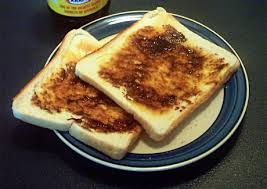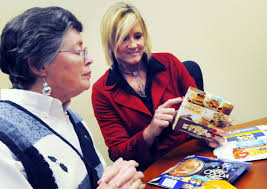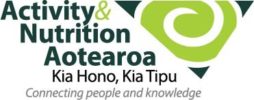24 May Salt
Letter to the Editor:
Reading food labels to help make healthy food choices
Earlier this week I was listening to a presentation by a dietitian who was discussing the nutrition information labels on food packaging.
One of the comments she made suggested that we should look at the ‘per 100g’ figure so that we can compare one product with another.
The following information arises from an activity that I used to do with Year 10 Science classes and challenges that idea; in fact, it is the ‘per serve’ numbers that we should concentrate on.
Sometimes, for lunch I like to have something tasty on toast. Looking in the kitchen cupboard I see that I could opt for Vegemite or baked beans.
 I notice on the label of the Vegemite that there is 3300mg of sodium (read ‘salt’) per 100g. That’s a very high number and confirms what my taste buds tell me – that Vegemite is a salty food. The label goes on to say that a serving (in this case 5g – what I would spread on my toast) contains 165mg of sodium. I can’t easily relate to that number but the manufacturer has helped by pointing out that this is 7% of my RDI. So I’ll be getting 7% of my daily salt needs from my Vegemite on toast.
I notice on the label of the Vegemite that there is 3300mg of sodium (read ‘salt’) per 100g. That’s a very high number and confirms what my taste buds tell me – that Vegemite is a salty food. The label goes on to say that a serving (in this case 5g – what I would spread on my toast) contains 165mg of sodium. I can’t easily relate to that number but the manufacturer has helped by pointing out that this is 7% of my RDI. So I’ll be getting 7% of my daily salt needs from my Vegemite on toast.
A quick calculation shows that the RDI for sodium is around 2350mg. So, recognising that too much salt will be bad for my blood pressure I look at the baked beans instead. I’ve chosen ‘lite’ beans which are advertised as low salt and low sugar. They’re the healthy choice and score 4.5 stars on the Health Star [Rating] system.
The nutrition label says the beans have 285mg of sodium (read salt) per 100 g which is a significantly smaller number than I saw on the Vegemite.
BUT, the portion size for beans is 210g – that’s how much I’d be putting on my toast and so (according to the panel) the beans have 600mg of sodium in a serving. Perhaps unsurprisingly, the label hasn’t converted that number to a percentage of my RDI, but since we know the RDI was 2350mg we can do the maths.
A serving of baked beans is providing me with about 25% of my daily salt requirement. There’s about 3.6 x as much salt in a serving of baked beans as there is in a serving of Vegemite.
Enjoy your lunch – but read the nutrition panels with care!
John Adams, 2018
ANA asked Vicki Robinson, national health promotion manager of the Stroke Foundation of New Zealand to respond:
Dear John,
Thank you for highlighting the complexity of reading food labels to make healthy food choices, especially when trying to compare two different foods such as Vegemite and baked beans. Unfortunately it is not so easy to compare two different foods.
Nutritional Information Panel also known as the NIP
Most food products by ‘law’ will display a nutrition information panel or NIP. Key nutrients must be listed including energy, total and saturated fat, sugar and sodium (or salt) to allow the nutrient profile of products to be compared. The NIP must contain the nutrients found in both a ‘serving size’ and ‘per 100g’.
Per Serving
 It’s worth noting that ‘serving sizes’ are determined by the food manufacturer and can vary from one product to another and will not necessarily equate to the serving size you select to eat. It does however provide a useful way to identify how much nutrient you eat such as the examples you have provided e.g. 5g serving size of vegemite provides 165mg sodium (or salt) and a 210g portion size of baked beans (if this is what you choose to eat) would give you 600mg serving of sodium.
It’s worth noting that ‘serving sizes’ are determined by the food manufacturer and can vary from one product to another and will not necessarily equate to the serving size you select to eat. It does however provide a useful way to identify how much nutrient you eat such as the examples you have provided e.g. 5g serving size of vegemite provides 165mg sodium (or salt) and a 210g portion size of baked beans (if this is what you choose to eat) would give you 600mg serving of sodium.
You can also (if you are enthusiastic) calculate the percentage of the nutrient that the ‘serving size’ provides compared to the recommended daily intake (RDI). Interestingly most New Zealanders eat almost twice as much sodium (or salt) than recommended contributing to high blood pressure and poor brain and heart health.
As the ‘serving size ‘is not always the same it makes comparing products difficult and that’s why using the 100g is easier when comparing one food with another.
Quantity per 100g
The ‘quantity per 100g’ is a much handier way of comparing similar products with each other so this is where you could compare one can of baked beans with another to find the one with the lowest salt content. In a quick look at the supermarket shelves I identified one tin of baked beans with 440mg sodium and a ‘lite’ variety with 285mg/100 and crackers with 1000mg compared to another with 500mg/100g. Comparing the nutrient profile of similar foods is an easier way to identify weight for weight, lower salt alternatives (but not their specific contribution to your diet). The Health Star Rating (HSR) works similarly with stars being attributed to the profile of nutrients found across similar food groups.
Many lower salt products can also be identified by wording such as ‘reduced salt’, ‘salt reduced’, ‘no added salt’, ‘less salt’ or ‘lite’ (though this could potentially mean low sugar, salt, fat or colour).
Healthy Eating Patterns
Processed, canned, packaged, ready to eat and fast foods provide almost 75% of your salt intake. Raising your awareness of nutrient profiles by reading and comparing NIPs per 100g (or if available the Health Star Rating) will make it easier to make healthier food choices. However, the key to making a difference for your health is to eat regular fresh fruit and vegetables and home prepared foods naturally low in salt and sugar.
Five useful facts about salt:
- Salt is also known as sodium chloride. It’s the sodium in salt that can raise your blood pressure.
- Sodium is important for health but too much sodium (or salt) can damage your health.
- New Zealanders are recommended to eat less than 4-6mg sodium ( approx. 1 teaspoon) daily to lower blood pressure and risk of cardiovascular disease and stroke.
- Table salt can come from sea water or mined from rock. It is available in different sized crystals and forms e.g. rock or pink Himalayan salt. While they may be marketed as healthier, all salts contain similar amounts of sodium and should only be used sparingly.
- Flavoured salt, such as herb salts, is simply salt with added herbs.
The Stroke Foundation of NZ has a useful page on their website called what you need to know about salt. You can see it here.
Vicki Robinson, National Health Promotion Manager, Stroke Foundation of New Zealand

